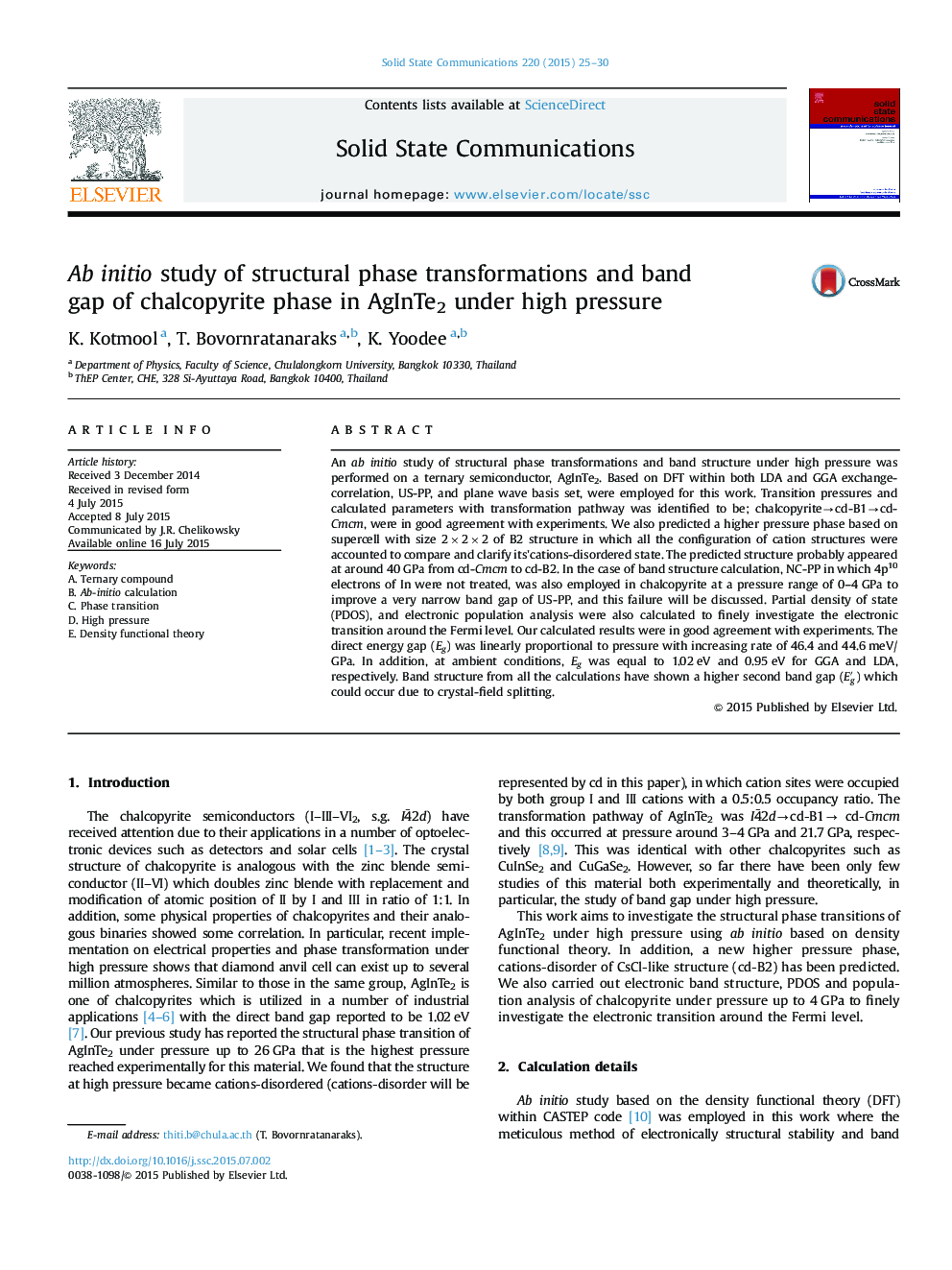| Article ID | Journal | Published Year | Pages | File Type |
|---|---|---|---|---|
| 1591396 | Solid State Communications | 2015 | 6 Pages |
•AgInTe2 has been systematically studied using ab-initio calculation up to the highest pressure ever been investigated.•We have predicted the new highest pressure structure of AgInTe2 as a cd-B2 structure stable over 40 GPa.•Electronic structure has been calculated and the pressure dependence of the bang gap has also been fully investigated.•The cations-disordered state was confirmed using supercell calculation.
An ab initio study of structural phase transformations and band structure under high pressure was performed on a ternary semiconductor, AgInTe2. Based on DFT within both LDA and GGA exchange-correlation, US-PP, and plane wave basis set, were employed for this work. Transition pressures and calculated parameters with transformation pathway was identified to be; chalcopyrite→cd-B1→cd-Cmcm, were in good agreement with experiments. We also predicted a higher pressure phase based on supercell with size 2×2×2 of B2 structure in which all the configuration of cation structures were accounted to compare and clarify its׳cations-disordered state. The predicted structure probably appeared at around 40 GPa from cd-Cmcm to cd-B2. In the case of band structure calculation, NC-PP in which 4p10 electrons of In were not treated, was also employed in chalcopyrite at a pressure range of 0–4 GPa to improve a very narrow band gap of US-PP, and this failure will be discussed. Partial density of state (PDOS), and electronic population analysis were also calculated to finely investigate the electronic transition around the Fermi level. Our calculated results were in good agreement with experiments. The direct energy gap (Eg) was linearly proportional to pressure with increasing rate of 46.4 and 44.6 meV/GPa. In addition, at ambient conditions, Eg was equal to 1.02 eV and 0.95 eV for GGA and LDA, respectively. Band structure from all the calculations have shown a higher second band gap (Eg′) which could occur due to crystal-field splitting.
